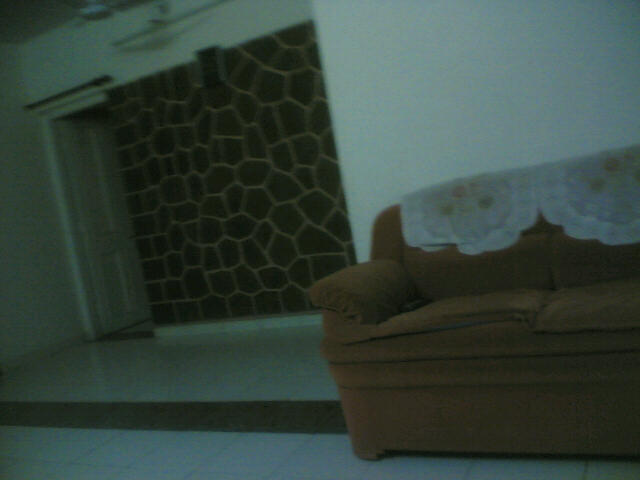The script itself was programmed during 3 days (4 days excercises/theory as well) and is based on example scripts from Jürgen Scheible's excellent Python for S60 tutorial.
The basic concept of the application is to take pictures and listen-in remotly using only 2 mobile phones. The phone used as the surveillance phone has to be a Nokia S60 model running Symbian with Pyhton installed in order for the script to work. The remote phone on the other hand could be any "dumb" phone which has basic browsing capabilities so that you could see the surveillance photo.
The Pyhton script works like this:
Once activated the surveillance phone shows a small preview picture so that you could position the phone's camera as you wish. The script can also work in the background so that anybody looking at the phone would not know that the script is running.
Once the script is started you can send SMS text messages to the phone for it to take action. In my example I have programmed two take actions for the phone when it receives SMS messages with predefined codewords or the appropriate key is pressed:
- Sending an SMS with the word "photo" (without quotation marks) will tell the phone to take a picture (reolution 640x480) and send it to a PHP script in a predefined server. The PHP script will then store the photo in the server directory so that it could be viewed from any browser. This action can also be activate by just pressing the SELECT key on the surveillance phone. The following image is the photo uploaded by the Pyhton script:

- Sending an SMS with the word "call" (without quotation marks) will tell the phone to dial a phone number that has been specified in the script. This way you can have the surveillance phone call you so that you can listen-in on what is going on at the location of the surveillance phone. This action can also be activate by pressing the nr. 2 key on the surveillance phone.
The Python script can be download here: jaans_camera_application.py
The PHP script can be download here: phone_surveillance_upload.txt
Further development
The script can easily be modifeid so that after receiving an SMS codeword it will continually upload photos (like a webcam) and another SMS codeword will make it stop.
The script could also be modified so that instead of calling a predifend phone number it would dial the number that sent the SMS codeword "call".

